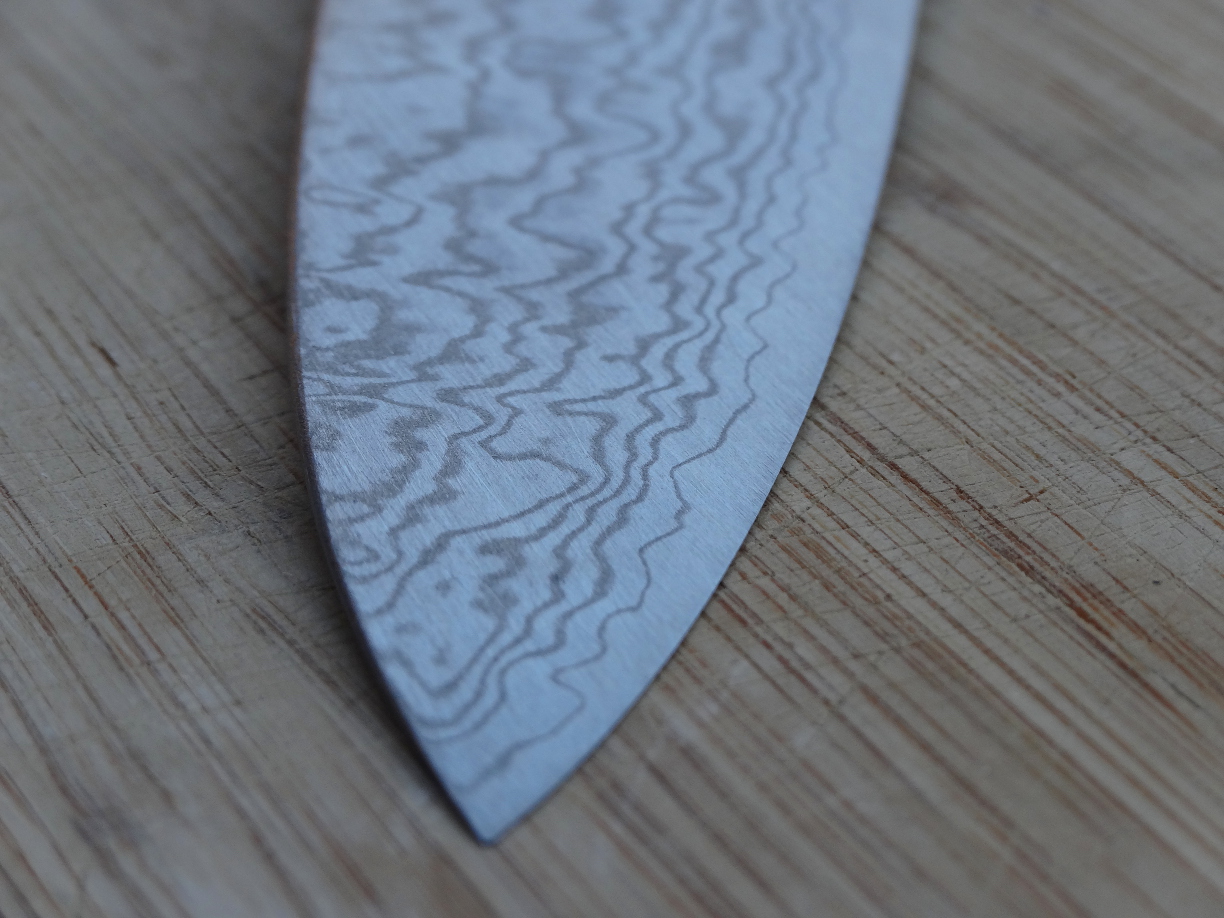@HumbleHomeCook ... if you'll forgive me for bringing your attention to this post...
Here's a Masahiro VC - carbon monosteel, and like any monosteel, a pain to re-finish so I do a botchy sandpaper job after thinning, whatever makes the deeper scratches fade most quickly to my eye goes...
because I know I'm gonna etch the full blade and have it look like this, with naturally blackened spots, and just looking like a patina of old:
Here's a Takayuki Damascus... One thing with a Tsuchime finish generally is that any scratch into it can be blended quite easily with sandpaper, since the surface is rougher to start with.
The Damascus layers were re-finished to high sandpaper grit, decent mirror finish, but I went quite fast about it... and I re-etched, not even using something strong like ferric chloride, but simple vinegar, which takes more time and is less spectacular. Under some angles, you can see the sandpaper scratches, and you can see the unevenness of the mirror polish I gave...
But under most settings...
And then again here's a Deep Impact... used the Cerax 320 to give a bevel finish... but as there were a lot of scratches upward of it, I taped off the bevel and gave a migaki-like finish with sandpaper, not going as fine as with the Takayuki for instance.
In the beginning I was scared of even having the tiniest of scratches from regular use. Then the necessity to work on my blades got me over that, but I was wasting a lot of time still not being satisfied, and not working correctly. I learned what goes, and what doesn't work so well. Now I kind of "botch" the jobs to the easiest way that looks okay, and keep happy.
And now, do you know what insults me most about a blade I need to refinish?
Those with stamped logo/kanji that you cannot save through a sandpaper progression. The only thing I don't like is removing the branding of a knife that's of value to me - even if that's a Victorinox. I still live with it. All my Victos are without logos but God do they cut to my likings. And I love J-knives that have a decently stamped engraving or truly engraved Kanji just because of that: you can refinish them all the way, and keep the maker's mark. It defines pretty well cheap knives from better one - those that have stamps which will vanish after a course of sandpaper, and those who live through many courses of sandpaper, and sometimes even look better when they become super polished by repetitive courses, making the stamp/engraving come out super nicely.
















